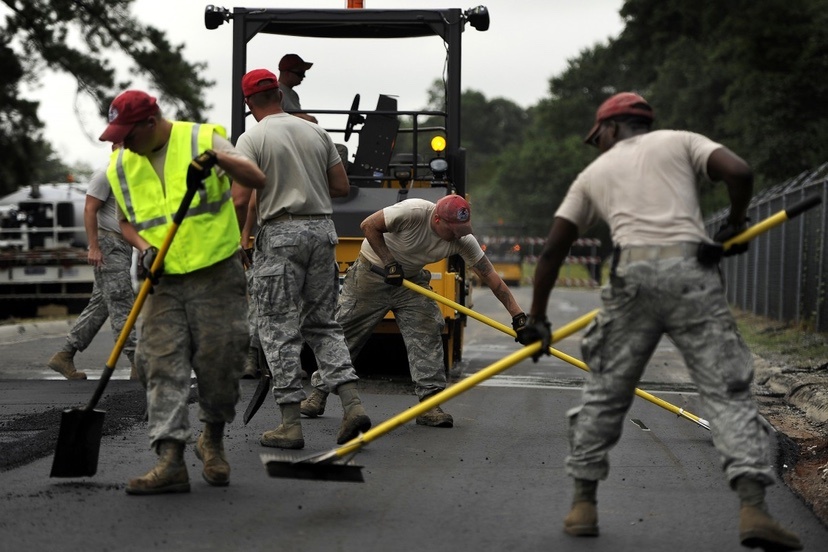My father often repeated a popular adage:
“You get what you pay for.”
Of course, we must also acknowledge the obvious truth that you can afford to pay for something, only up to the amount of your credit card limit. Or, in the case of county government, the limit of your tax revenues, which you will receive from your community, only reluctantly.
We’d all like to have the best of everything… but we can’t always bear the expense.
At the April 2 work session for the Archuleta Board of County Commissioners, Public Works Director Mike Torres summarized his belief that the asphalt on certain County roads can be successfully ‘recycled’ by a Kansas-based company called Dustrol Inc.
Many of us here in Pagosa understand that certain paved County roads could use the help. Perhaps we have paid an invoice recently, for a wheel alignment?
Here’s Mr. Torres, explaining the recycling option.
“Earlier this year, we came up with a road plan, and I gave you guys a list of roads we’re going to be completing, as far as new asphalt projects and that sort of thing.
“Well, that was our first initial project, and we’re inviting a vendor to come back and give us some more information on what they do for Archuleta County… The company is Dustrol. What they do is come in and actually do a service for the existing asphalt roads. They mill up the first couple of inches of asphalt road, recycle it into new asphalt, and then lay it back down, creating, essentially, a new road…”
As we will hear in a moment, this process could save the County a substantial amount of money, compared to fully reconstructing its failing paved roads.
A bit of clarification might be appropriate here, based on what little I know about asphalt roads.
There are at least four factors that can lead to the failure of asphalt road surfaces.
First, and foremost perhaps, is poor drainage. If water gets underneath a paved surface, it can eventually lead to road failure — especially in a climate marked by freeze-and-thaw cycles. (Like, for example, here in the San Juan Mountains.). Many Archuleta County roads were built back in the 1970s, without optimal drainage.
Secondly, pavement failure can be the result of badly installed road-base and sub-base — the thick layers of larger rocks underneath the asphalt layer that support the repeated weight of the vehicles. Many Archuleta County roads were built, back in the 1970s, without optimal road-base or sub-base.
A third cause of asphalt failure is a too-thin layer of asphalt for the type of traffic the road will service — and in the case of some older Archuleta County roads, asphalt that is thick enough in some sections, and too thin in other sections.
Fourth is lack of maintenance. Asphalt pavement needs to be maintained to have the best possible lifespan. Asphalt ‘dries out’ and loses its necessary flexibility over time, and regular applications of sealcoats, chip sealing, or asphalt overlay can help.
The first step is to make sure cracks are sealed with tar, and potholes are patched. (As noted, water is not asphalt’s friend.)
‘Asphalt emulsion sealcoats’ are a cost-effective way to preserve pavement, providing a cleaner, newer look. But emulsion sealcoats are less durable and require more frequent applications.
Chipsealing is a better choice for roadway pavements, but somewhat more expensive.. This process uses a layer of asphalt emulsion emulsion covered by gravel to form a new surface.
A road overlay involves a new layer of asphalt, typically 1.5 to 2.5 inches thick, spread over the existing road. More expensive still.
These maintenance steps are best applied before the roadway starts to fall apart. Some of our County roads are still in good enough shape to benefit from sealing and overlays, but some are too far gone.
With that background, here is Public Works Director Mike Torres again:
“They mill up the first couple of inches of asphalt road, recycle it into new asphalt, and then lay it back down, creating, essentially, a new road… Of course, it’s not the full depth, but it gives a smooth surface, just like a new road…
“The cost saving on that is huge. We’re looking at doing 8.2 miles total in the county this year, using the vendor that does this in this area… and they would like to come and help us out. So we’re looking at doing 2.8 miles of North Pagosa… we’ll be doing 1.3 miles from Aspen Glow to Edgewater… 0.7 miles of Navajo Trail… 1.7 miles on Hatcher Circle… 1.7 miles on South Pagosa, from Carino Place to Meadows…
“So, all of that would be ‘rejuvenated’ asphalt. We’ll have ‘hot-in-place’ recycling done, and so I have that on the agenda for your approval this afternoon…”
It was, indeed, approved that afternoon.
“All those roads do need maintenance done, because they are starting to show surface cracking and potholes and that sort of thing, so this will definitely extend [the life of] those roads that we have, better than laying asphalt on them. After this is done, we will come back and chipseal them, lay that extra layer on top…”
Mr. Torres noted that they did go out to bid on the section of North Pagosa that adjoins Highway 160; the bids came back, and Road & Bridge hopes to get that project completed before Memorial Day. This work will involve a ‘full reconstruction’ of the road segment, at a proposed cost of $487,000.
So then, a half-million dollars for a couple of blocks of reconstructed public roadway.
We can understand that the BOCC would be looking for less expensive ways top maintain our roads.
But I’m curious about this ‘recycling project’ which is a rather different process from a ‘full reconstruction’. We understand that ‘recycling’ will be much cheaper. We also know that, generally speaking, you get what you pay for.
I’ll share some concerns tomorrow…

